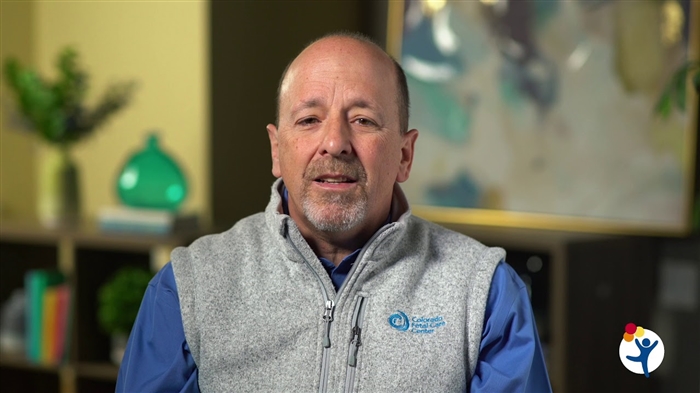
Pastel is one of the traditional ways of painting, which has won recognition even among those artists whose names are known all over the world. Although it is generally believed that this substance is more designed specifically for professionals, in recent years, pastel crayons are increasingly used for children's creativity in order to develop imagination and spatial thinking in babies.
Naturally, such a drawing tool is somewhat different from all the usual pencils, so it is worth taking a closer look at what its key features are.

What it is?
With its long history and ubiquity, it should be noted that pastel is still a mystery to many parents. In fact, it looks approximately the same as ordinary children's crayons, that is, it is not dressed in any shell and can draw with absolutely all its ends. A small exception is pastel pencils - these are, accordingly, ordinary pencils, only with pastel crayons instead of a lead, but they are more often referred to as unusual pencils than unusual pastels.


Parents who purchase a paint tool for their own kids are also worried about the composition of what they buy. The main components of oil pastels are, in fact, dyes, non-drying oil and wax. Oil bases are usually selected from natural sources, and if a natural dye was also added, it means that such a crayon is completely safe for the child.
Pastels are rarely accused of negatively affecting children's health, so we can safely say that this is one of the safest materials for children's creativity.

Advantages and disadvantages
Oil pastels have pros and cons when compared not only to other drawing materials, but also to other types of pastels. Its traditional advantages include the following, which will definitely be appreciated by the child:
- The ability to paint literally on any surface, since the special composition successfully "clings" to a large number of materials, including paper, wood, metal and glass surfaces, as well as fabric.
In this regard, parents should be more attentive to the organization of the creative process, otherwise the whole apartment will be outlined!


- Oil pastels resist drying, they are always fresh and soft enough not to require much effort from the child to paint. Such crayons also almost never crack, so it is very convenient to store it for a long time.


- Unlike many other types of pastels, the oil version does not really need a fixative - due to its fat content, it is already well absorbed into the surface, which allows you to not process the surface of the drawing after finishing the work.

- Oil pastel paints are very bright and picturesque, reminiscent of traditional oil painting, although they are performed in a completely different technique. Even the unskillful first tests of the baby are very colorful and interesting, which only contributes to the further passion for drawing.


- Most types of pastels are completely safe for the child, which allows parents not to worry about the health of the baby.

There are no obvious shortcomings that would literally repel children from drawing with oil pastels, so the arguments below will be of interest only to those children who have already reached a certain level of skill in the visual arts and are looking for means with strictly defined properties. So, you can criticize oil pastels for the following features:
- Although the oil pastel drawing itself does not require any special fixation, it can be difficult to protect it with additional means (for example, from accidental moisture ingress). Most retainers are not suitable for this purpose. For this, special substances are needed, and the question is whether they will spoil the creative idea.

- Oil pastels virtually eliminate the possibility of mixing existing colors in order to obtain new shades. It is impossible to do this outside the surface of the drawing due to the hardness of the material, and applied to paper or other base, it simply overlaps with a new color.

- Oil pastels have a rather hard edge, which is useful for depicting objects with sharp outlines, but creates problems for drawing blurry outlines.


In general, oil pastels are very good material for children's creativity, but at more serious stages of mastering the art of drawing, it will be used at least as an additional element.

Kinds
Although oil pastels are in themselves a subtype of pastels, upon careful study, they can be classified according to certain criteria. Due to the relatively small number of differing parameters, all of its varieties are relatively similar to each other, but nevertheless, such differences are very striking for professional artists.

First of all, it's worth noting that although all pastel crayons in this category are oil-based, the percentage of this ingredient may vary. In addition to the classic oil pastels, water-oil pastels and watercolor art oil pastels also stand out. The classic version gives the result that is as similar as possible to oil painting and is considered more professional, although it requires delicate work with a solvent.
Two alternative varieties have a characteristic specificity that allows them to be washed out even with ordinary water, which is very important for artists who, for some reason, cannot tolerate pungent chemical odors.
In addition, any pastel, including oil, is divided according to the degree of hardness. Hard varieties are characterized by increased dryness, in connection with which they cling to the surface a little worse, but only they can thinly and accurately draw small details and contours, while the colors mix poorly. Soft pastels have completely opposite qualities - they stick well to most foundations and give slightly blurred outlines, blending in places where multi-colored parts meet.
Due to this specificity, it is the soft varieties that are recommended for children.

Soft pastels can be found individually, but more often multicolor sets are sold, which is especially convenient and practical in the case of children. Sets of 12 colors usually consist of one category of shades (standard, with a metallic sheen or fluorescent), of 18-24 colors they contain either an extended palette of one category, or colors of two categories at once, but 36 and 50 colors are already a worthy gift even a pretty good artist.


How to choose?
When choosing oil pastels for a child, you should first take into account his needs, depending on the age and degree of mastery of the art of drawing. It is quite obvious that a teenager who already draws beautifully does not need a typical children's pastel, but something more professional, while for a beginner of preschool age, chalk abilities are even less important than safety and convenience.


In this regard, children usually buy soft crayons, which very easily leave a mark without extra effort, and at the same time they paint on almost any surface, which does not require the purchase of a special album for drawing with pastels. The technique of painting with oil pastels usually involves subsequent blurring after hatching, however, the baby cannot cope with such a difficult task on his own, especially since the solvent used is probably toxic.
For this reason, beginners usually buy that oil pastel, which includes watercolor - it is perfectly washed out even with ordinary water.


Among other things, oil pastels can be used not only for classic drawing, but also for toning foamiran crafts. Experts say that dry pastels are still better suited for these purposes, because they give richer shades, but the oil varieties cling much better to woven surfaces, although they require longer drying in well-ventilated rooms.
For making foamiran crafts as a home hobby, oil pastels will be a very convenient addition.
Brands
Only hardened artists are well-versed in varieties of oil pastels, while beginners who have never been interested in this topic before can find it difficult to make a choice. For them, the easiest choice is to target big-name brands, and sometimes this approach actually works.

Most often on the shelves of domestic stores you can find the company's oil pastels "Ray"... This brand is probably known to everyone due to its widespread prevalence and an extensive range of various products for children's creativity, as well as a very affordable price, but this is the catch: such funds are suitable only for fairly primitive arts.
In a word, when purchasing such crayons, you should not count on special quality - this is, so to speak, the basic equipment


... If you really want to support a Russian manufacturer, it is better to pay attention to oil pastels "Sonnet"produced by the company "Nevskaya palitra".


If we compare the products of foreign brands, then the products of the Korean company are the most promoted. Mungyo, which in general is mainly engaged in pastels, and in the world of oil crayons, she practically has no equal. These are high-quality products with an optimal level of softness, allowing even a child to paint, and yet designed for the needs of serious artists. However, the assortment is wide enough to find the best options for each category of creative people.
Derwent and Artbar trade marks deserve attention as alternative brands of foreign oil pastels.


Optional accessories
If you buy only one oil pastel without any additional accessories, then there will be no more sense from it than from ordinary children's crayons. In order for the best qualities of the substance to manifest themselves with maximum efficiency, it is worth purchasing at least a special paper for drawing with pastels - it has a corrugated texture, due to which the pigment adheres better to its surface. It also makes the paper thicker, allowing you to blur your strokes for added artistic effect.
However, soft pastels for children are painted on any surface.

Again, water-based or water-based children's oil pastels can be washed out even with plain water, but a solvent will be needed to wash out more serious professional varieties of this material. This substance does not need to be purchased at random, but with an eye on the specific type of oil pastel used.
You can clarify what type of solvent you need, and you can also buy what you want in any major art store.

Pastel, being an analogue of chalk, itself does not require any additional drawing devices, but the solvent used to dilute it requires a special tool for application. Some artists apply it to the shaded drawing with a special paper stick, others use ordinary brushes of a certain shape and size.

Reviews
It's even surprising why the use of pastels for children's creativity has such a short history, because comments from parents on specialized forums make you think that this tool is very well suited for such purposes. It is not only safe but also very comfortable for babies, since the crayon draws from all sides and does not require any preliminary holding skills, thanks to which even the smallest can draw with it.


Oil pastels, unlike other types of this substance, perfectly adhere to canvases of different origins, and also almost always gives very bright, saturated shades, which children really like and stimulates their creative impulse. Moreover, pastel crayons leave a lot of room for creative growth, because over time, the child can master the technique of shading, turning pastel drawings into imitation of painting.
Finally, a huge range of products of this type allows every artist, regardless of age and preference, to find the perfect tool for painting.

For more information on the types and features of oil pastels, see the next video.



